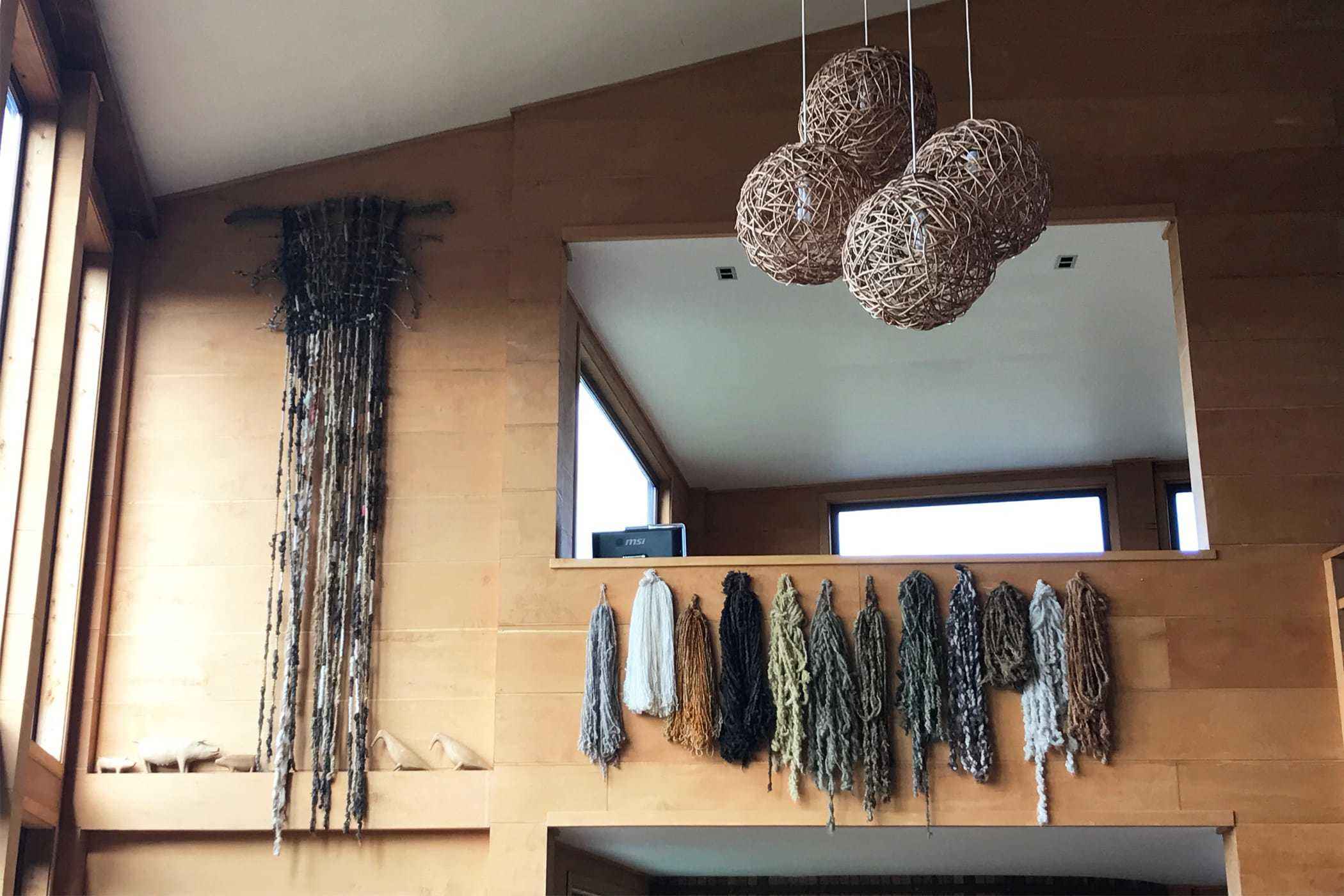Textiles made from traditional techniques are still in high demand.
Chile’s long history of weaving and wool dates back far beyond Spanish colonization. For more than 10,000 years, the indigenous Mapuche people have withstood Spanish conquistadors as well as the Incas and maintained their independent culture, so much so that their customs, food, and language has made its way into mainstream Chilean culture—particularly in their incredible woven craftwork.
The Mapuche have been creating gorgeous, quality textiles and wool products for centuries. In Andean societies, textiles serve multiple purposes: to be worn as clothing, to be used as tools and in shelter, to be presented as a status symbol. Today, traditional weavers are known as arañas (spiders) for their superior spinning skills.

On the archipelago of Chiloé, off the eastern coast of Chile, islanders have long woven woolen clothes, blankets, hats, and shoes to keep themselves warm and dry during the cold, rainy winters and misty, windy summers. The islanders use techniques of Mapuche origins because of their outstanding durability—nearly waterproof due to the quality of raw wool—and beautiful style.
Mapuche designs are unique and significant. Geometric motifs symbolize important cultural values, such as plants, animals, natural elements such as rain, air and fire, and spirits. The incredible colors are long-lasting due to the quality of tints and dyes.
Recommended Fodor’s Video
The process of weaving is passed down from Mapuche and Chilote women to their families, especially daughters, and incorporates all aspects of its craftwork: washing, stretching, spinning, and dyeing wool by hand. Looms are handmade from local timber; the most commonly used types of loom are the upright “Mapuche” loom, and the horizontal “Chilote” loom from the Chiloé Archipelago, which is worked from a kneeling position.
As families pass down these weaving techniques, they also pass on the important stories and origins of their past. Nowadays, handcrafted goods are exchanged and sold for worldwide consumption via markets stalls, brick and mortar stores, and even online.















 As families pass down these weaving techniques, they also pass on the important stories and origins of their past. Nowadays, handcrafted goods are exchanged and sold for worldwide consumption via markets stalls, brick and mortar stores, and even online.
As families pass down these weaving techniques, they also pass on the important stories and origins of their past. Nowadays, handcrafted goods are exchanged and sold for worldwide consumption via markets stalls, brick and mortar stores, and even online.
